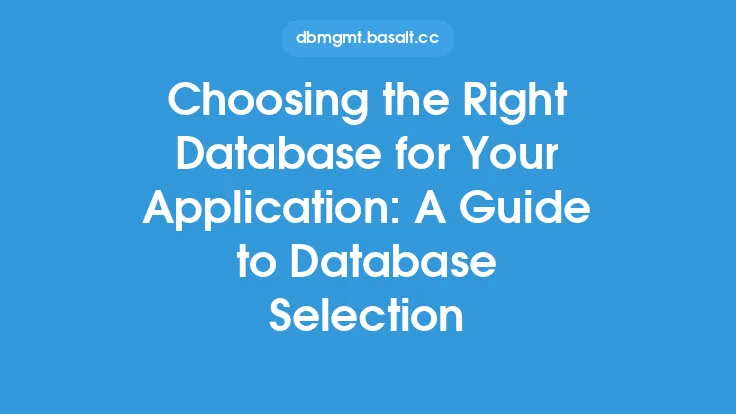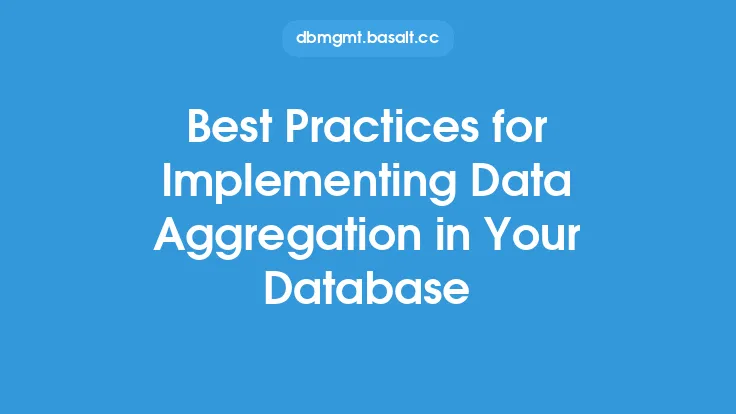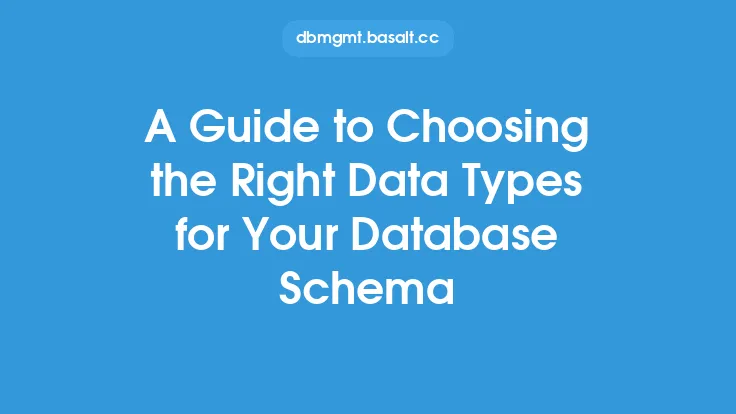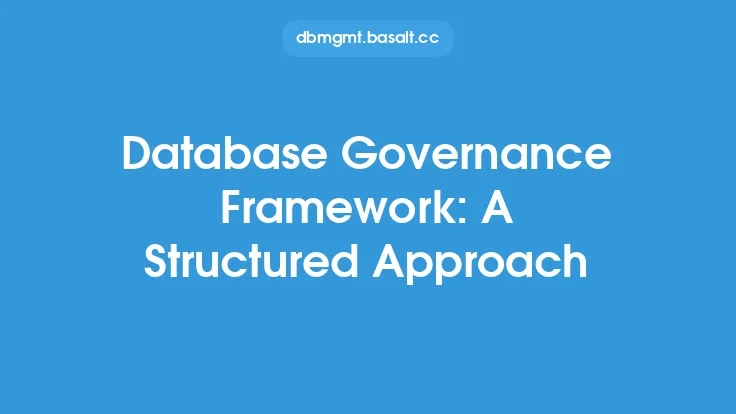Building a robust data governance framework is essential for any organization that relies on data to make informed decisions. A well-designed framework ensures that data is accurate, reliable, and accessible, while also protecting sensitive information from unauthorized access. In this article, we will delve into the key components of a data governance framework and provide guidance on how to build one for your database.
Introduction to Data Governance Frameworks
A data governance framework is a set of policies, procedures, and standards that define how an organization manages its data assets. It provides a structured approach to data management, ensuring that data is properly collected, stored, processed, and disseminated across the organization. A data governance framework typically includes components such as data quality, data security, data access, and data retention, among others. By establishing a data governance framework, organizations can ensure that their data is trustworthy, compliant with regulatory requirements, and aligned with business objectives.
Key Components of a Data Governance Framework
A comprehensive data governance framework consists of several key components, including:
- Data governance policies: These policies define the overall vision, mission, and objectives of the data governance program. They provide a framework for decision-making and ensure that data management practices are aligned with business objectives.
- Data governance procedures: These procedures outline the steps required to implement data governance policies. They provide detailed guidance on data management tasks, such as data collection, data storage, and data dissemination.
- Data governance standards: These standards define the requirements for data quality, data security, and data access. They ensure that data is accurate, complete, and consistent, and that it is protected from unauthorized access.
- Data governance metrics: These metrics measure the effectiveness of the data governance program. They provide insights into data quality, data security, and data access, and help identify areas for improvement.
Data Governance Framework Design
Designing a data governance framework requires a thorough understanding of the organization's data assets, business objectives, and regulatory requirements. The following steps can help guide the design process:
- Identify data stakeholders: Identify the individuals and teams that will be impacted by the data governance framework. This includes data owners, data stewards, and data users.
- Assess data assets: Assess the organization's data assets, including data sources, data storage, and data processing systems.
- Define data governance policies: Define the data governance policies that will guide the management of data assets. This includes policies for data quality, data security, and data access.
- Establish data governance procedures: Establish the procedures required to implement data governance policies. This includes procedures for data collection, data storage, and data dissemination.
- Develop data governance standards: Develop the standards required to ensure data quality, data security, and data access. This includes standards for data formatting, data validation, and data encryption.
Implementing a Data Governance Framework
Implementing a data governance framework requires a structured approach to ensure that all components are properly integrated and functioning as intended. The following steps can help guide the implementation process:
- Develop a data governance plan: Develop a plan that outlines the steps required to implement the data governance framework. This includes a timeline, budget, and resource allocation.
- Establish a data governance team: Establish a team that will be responsible for implementing and maintaining the data governance framework. This includes data stewards, data owners, and data users.
- Provide training and awareness: Provide training and awareness programs to ensure that all stakeholders understand the data governance framework and their roles and responsibilities.
- Monitor and evaluate: Monitor and evaluate the effectiveness of the data governance framework. This includes tracking data governance metrics and identifying areas for improvement.
Data Governance Framework Tools and Technologies
A range of tools and technologies can support the implementation and maintenance of a data governance framework. These include:
- Data governance platforms: These platforms provide a centralized repository for data governance policies, procedures, and standards. They also provide tools for data quality, data security, and data access.
- Data quality tools: These tools provide capabilities for data validation, data cleansing, and data transformation. They ensure that data is accurate, complete, and consistent.
- Data security tools: These tools provide capabilities for data encryption, data masking, and access control. They ensure that data is protected from unauthorized access.
- Data analytics tools: These tools provide capabilities for data analysis and reporting. They help identify trends, patterns, and insights that can inform business decisions.
Best Practices for Data Governance Frameworks
The following best practices can help ensure that a data governance framework is effective and sustainable:
- Establish clear roles and responsibilities: Establish clear roles and responsibilities for data stewards, data owners, and data users.
- Develop a data governance plan: Develop a plan that outlines the steps required to implement and maintain the data governance framework.
- Provide training and awareness: Provide training and awareness programs to ensure that all stakeholders understand the data governance framework and their roles and responsibilities.
- Monitor and evaluate: Monitor and evaluate the effectiveness of the data governance framework. This includes tracking data governance metrics and identifying areas for improvement.
- Continuously improve: Continuously improve the data governance framework by incorporating new technologies, tools, and best practices.
Conclusion
Building a data governance framework is a critical step in ensuring that an organization's data assets are properly managed and protected. By following the guidance outlined in this article, organizations can establish a robust data governance framework that supports business objectives and regulatory requirements. Remember to stay focused on the key components of a data governance framework, including data governance policies, procedures, standards, and metrics. With the right tools, technologies, and best practices, organizations can ensure that their data is trustworthy, compliant, and aligned with business objectives.





